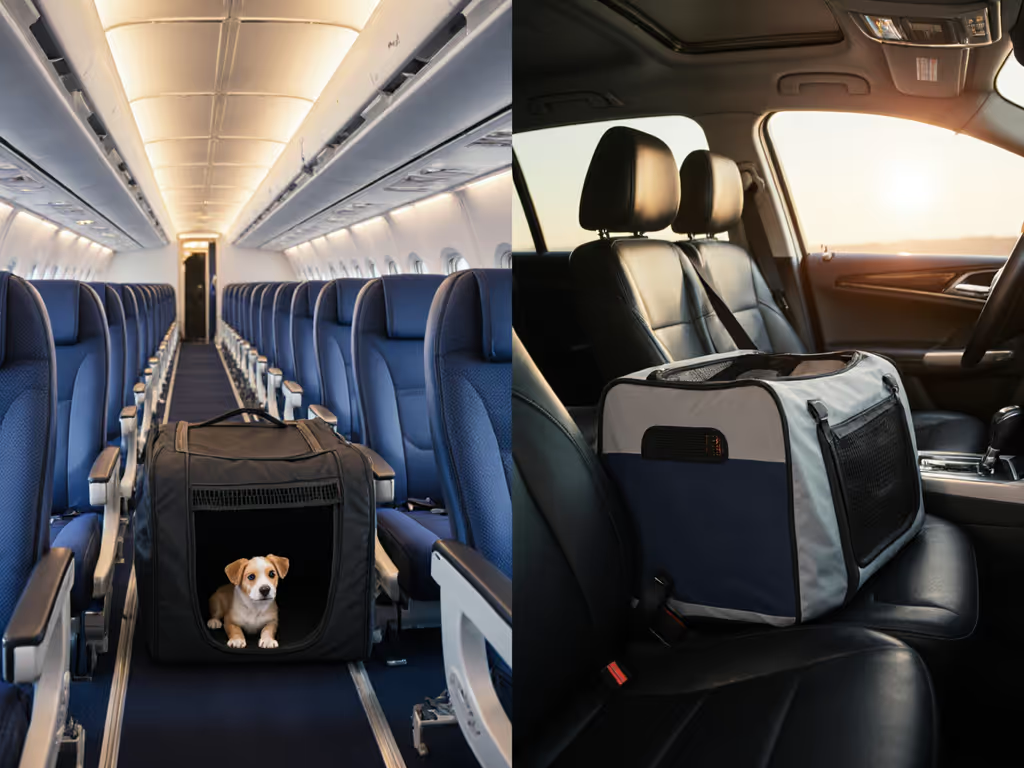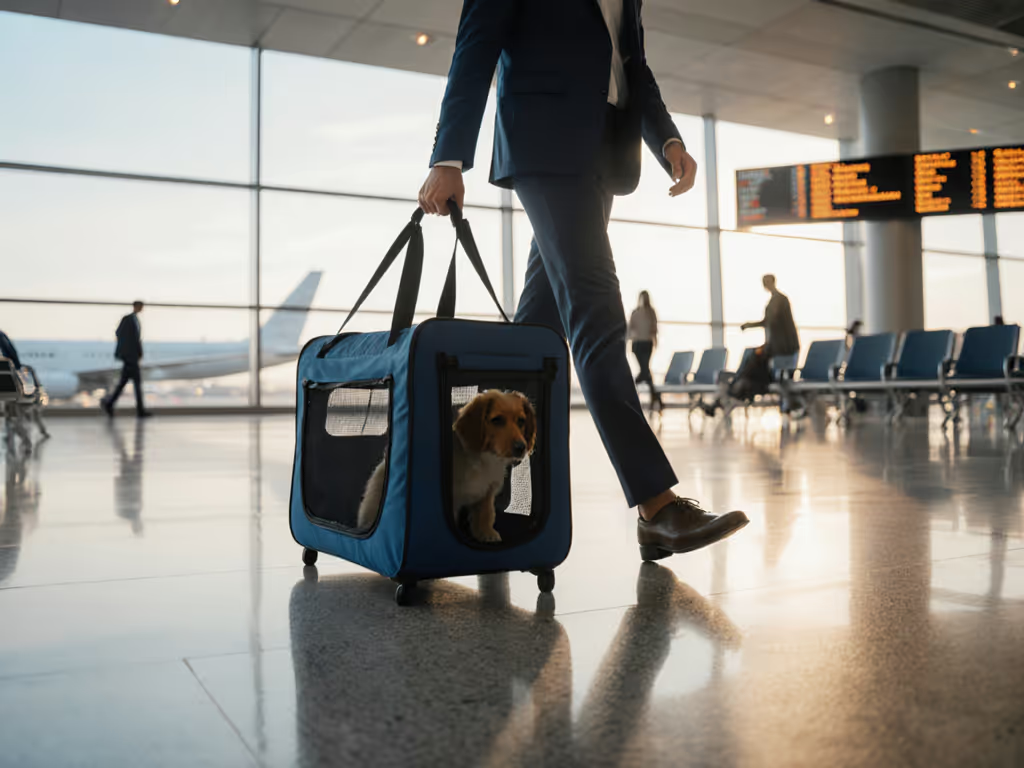
Pass Gate Check: Airline Approved Pet Carrier Specs
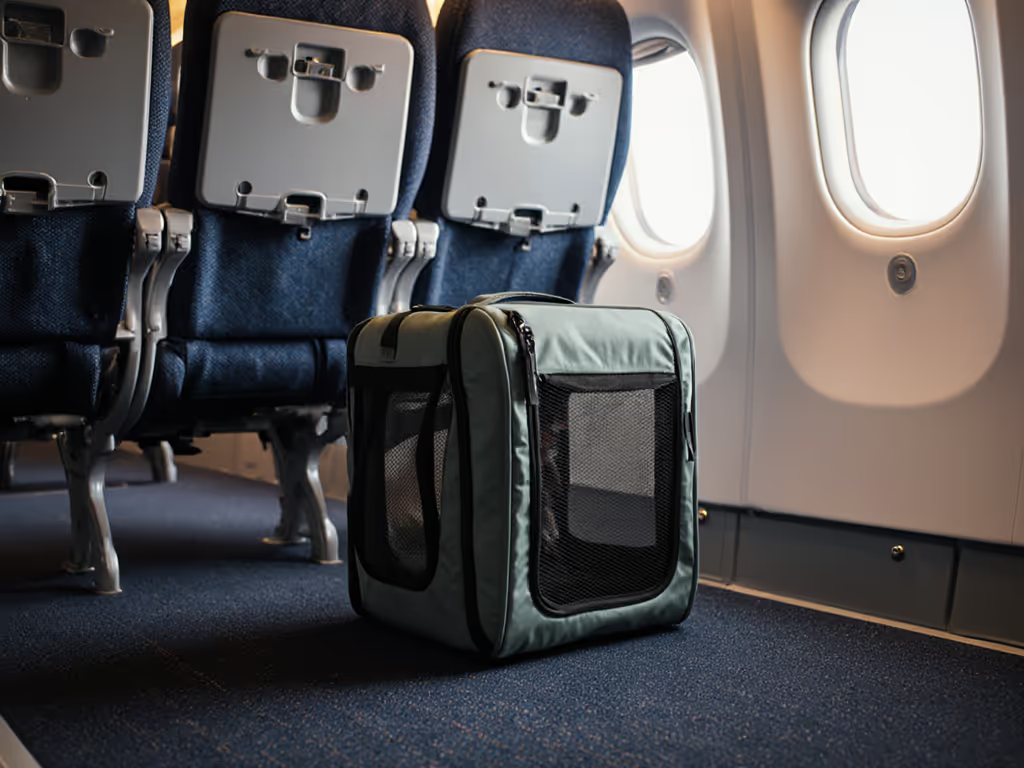
The moment your airline-approved pet carrier clears security without a second glance, that's the quiet victory travel-savvy pet parents chase. Having watched bright pet totes draw awkward stares at CDG while my own carrier sailed through (matching my coat, meeting every ventilation rule), I know true success isn't about flashy aesthetics. It's about pet travel guidelines executed with military precision. When your carrier blends in visually, stands out in quiet function, you've won before boarding even begins. But with airlines shifting size limits weekly and agents enforcing rules inconsistently, confidence demands more than hope. Let's dissect what actually passes gate checks in 2025 (using hard data, not guesswork).
Why "Approved" Is a Mirage (And What Actually Passes)
That "airline approved" label? Worthless without context. Airlines don't endorse specific brands, they enforce dimensions. A carrier deemed "approved" for United's main cabin (max 18" L x 11" W x 11" H for soft-sided) fails instantly on a Boeing 737 MAX 9 where height caps at 10". Meanwhile, American Airlines accepts hard-sided carriers up to 19" x 13" x 9" on mainline flights, but slashes that to 16" x 12" x 8" for regional jets. Sun Country? A strict 16" x 10" x 8" across all flights. For carrier-by-carrier details, see our airline pet carrier regulations guide.
What gets pets denied isn't size on paper, it is failing the gate agent's ruler test. Airline approved pet carrier specs mean nothing if your carrier's actual height exceeds the limit when upright (not collapsed). Agents test this by standing carriers against a fixed ruler, so "compressible" claims are irrelevant. Measure vertically from base to highest point with your pet inside, seated naturally. If it's 0.5" over? Rejected. Always prioritize rule-checked dimensions over marketing fluff.
Decoding Real-World Enforcement: 3 Data-Driven Rules
1. Carrier Type Dictates Your Battlefield
- Soft-Sided Carriers: Accepted by all major U.S. airlines for cabin travel (United, American, Delta, etc.). Max dimensions vary by airline but universally prioritize under-seat fit. Critical: Stitching must withstand pressure (flimsy mesh panels stretch during compression checks, adding illegal height). Choose ripstop nylon with dual-zipper security (agents often tug mesh to test integrity).
- Hard-Sided Carriers: Banned by some airlines (e.g., United rejects them for transatlantic flights). On American Airlines, hard-sided carriers get stricter size limits (19" x 13" x 9" max) and weight restrictions if flying First Class on A321T aircraft (20 lbs limit). Avoid unless your airline explicitly permits them, soft-sided is the universal safe bet.
2. Aircraft Type Trumps Airline Promises
Your carrier's fate hinges on the plane you're boarding. Delta excludes pets entirely from A319/A320 flights. American Airlines blocks checked pets on A321 variants. Always verify:
| Airline | Aircraft Type | Max Carrier Height |
|---|---|---|
| United | Boeing 737 MAX 9 | 10" |
| American | Regional Jet (American Eagle) | 8" |
| Sun Country | All Flights | 8" |
Call the airline after booking and ask: "What aircraft model is scheduled for my flight?" Then cross-reference carrier height limits. No guesswork. No surprises.
3. "Fits Under Seat" Is a Performance Test
It's not theoretical. Gate agents simulate under-seat storage by placing carriers against a standard ruler taped to the floor. If your carrier's loaded height (pet + carrier) exceeds the limit, it's denied. Pro tip: Practice with your airline's exact dimensions. Slide a ruler under your couch. Can the carrier fit while your pet sits upright? If not, it fails. This is why IATA-compliant carriers matter less than airline-specific measurements.
The Fit-First Measurement Protocol (No Guesswork)
Stop relying on pet weight charts. A 15-lb Dachshund needs more length than a 15-lb French Bulldog. Measure your pet's dimensions in travel posture:
- Length: Nose to base of tail (not tip!) while sitting. Add 1" for comfort.
- Height: Floor to highest shoulder point (withers) while standing. Crucial for height compliance.
- Girth: Widest point (usually chest) while seated. Ensures no squeezing.
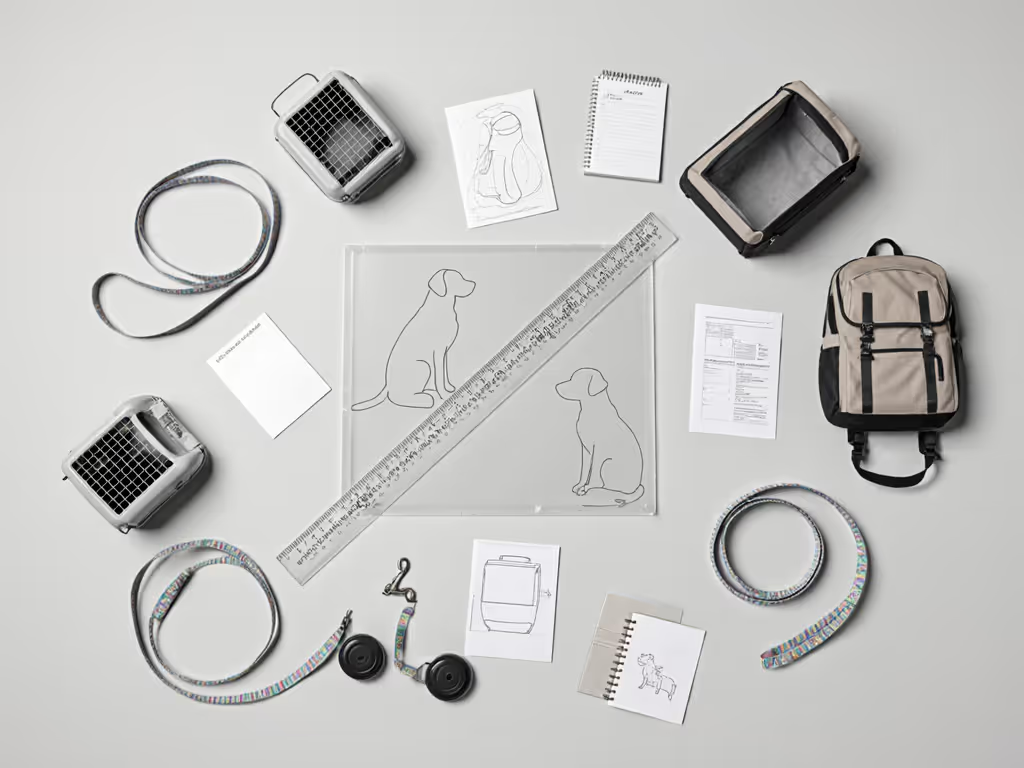
Compare these to your target airline's strictest limit. Example: If United's 10" height rule applies (737 MAX 9), your pet's measured height + carrier base must be <= 9.5". Padding eats precious space, opt for thin foam liners. Remember: fit-first, then finish. A carrier that precisely fits your pet's metrics but clashes with your trench coat? Still better than a denied boarding.
Temperament & Travel: Beyond Dimensions
An anxious pet turns a compliant carrier into a liability. Airlines reject carriers where pets pant excessively or scratch mesh, deemed "disturbing other passengers." Address this early:
- For escape artists: Double-lock zippers + chew-resistant mesh (tested per ASTM F2097). No exposed stitching.
- For heat sensitivity: Mesh must cover at least 65% of the carrier surface. Cross-ventilation (side + top panels) prevents overheating, even in winter cabins.
- For noise anxiety: Swap Velcro for silent magnetic closures. Line carriers with calming pheromone pads before flights.
Crucially, never trade ventilation for looks. A sleek carrier with minimal mesh fails the ventilation check, a hidden rule all airlines enforce verbally. Agents poke mesh to ensure airflow. If your finger meets resistance? Rejected.
Your Pre-Flight Compliance Checklist
- Confirm aircraft type 72 hours pre-flight (airlines change planes last-minute).
- Measure loaded carrier against actual airline specs, not brand claims.
- Test under-seat fit at home with ruler taped to floor.
- Verify mesh integrity: Push against panels; they shouldn't bulge > 1".
- Attach proof of compliance: Print the airline's size chart + circled dimensions.
When agents see you've done their job for them? They wave you through. Style isn't hiding your pet carrier, it's choosing forms that don't invite scrutiny while passing the unspoken tests. At CDG, that's how I sailed past with a carrier matching my coat's charcoal grey, no agent questions, just a nod.
Good design disappears in public and delivers in use. Your airline-approved pet carrier shouldn't scream "pet luggage." It should look like a discreet weekender that, when tested, meets every rule silently. Focus on rule-checked dimensions, not trends. Prioritize pet airline regulations over aesthetics, and you'll achieve the ultimate travel luxury: moving through the world with your companion, unseen yet utterly prepared. For deeper aircraft-specific dimensions and carrier measurement toolkits, I'll share my vetted checklist in next week's guide, because true peace of mind starts long before the gate check.
Related Articles

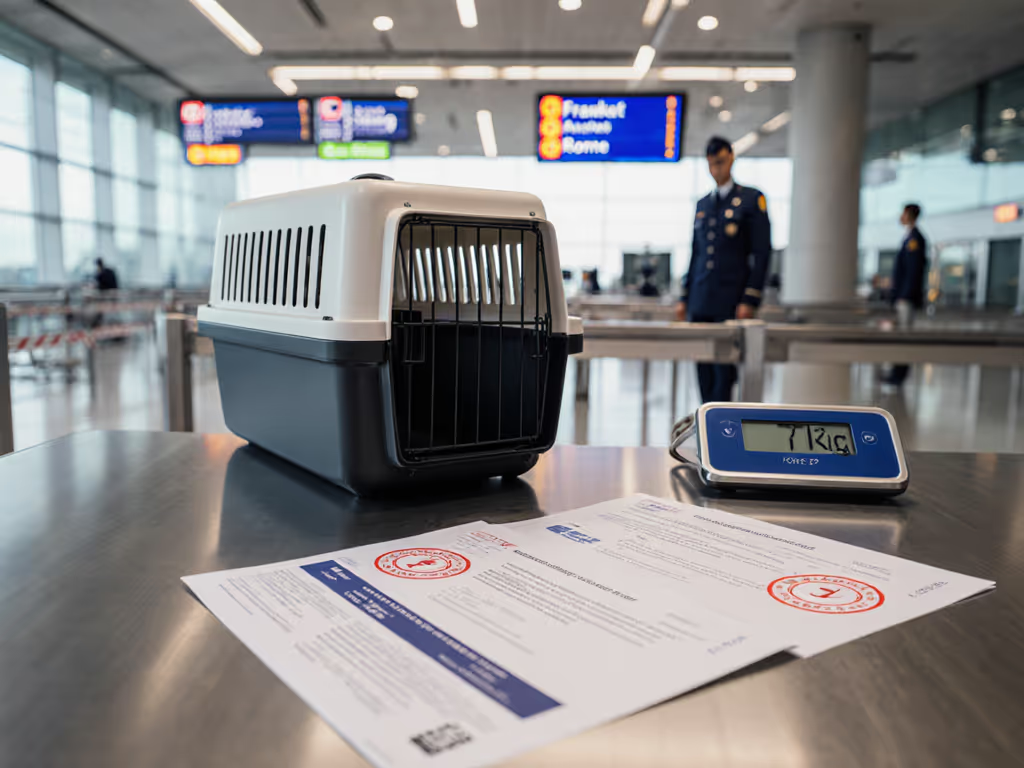
EU Pet Carrier Safety: Critical Differences From US Rules
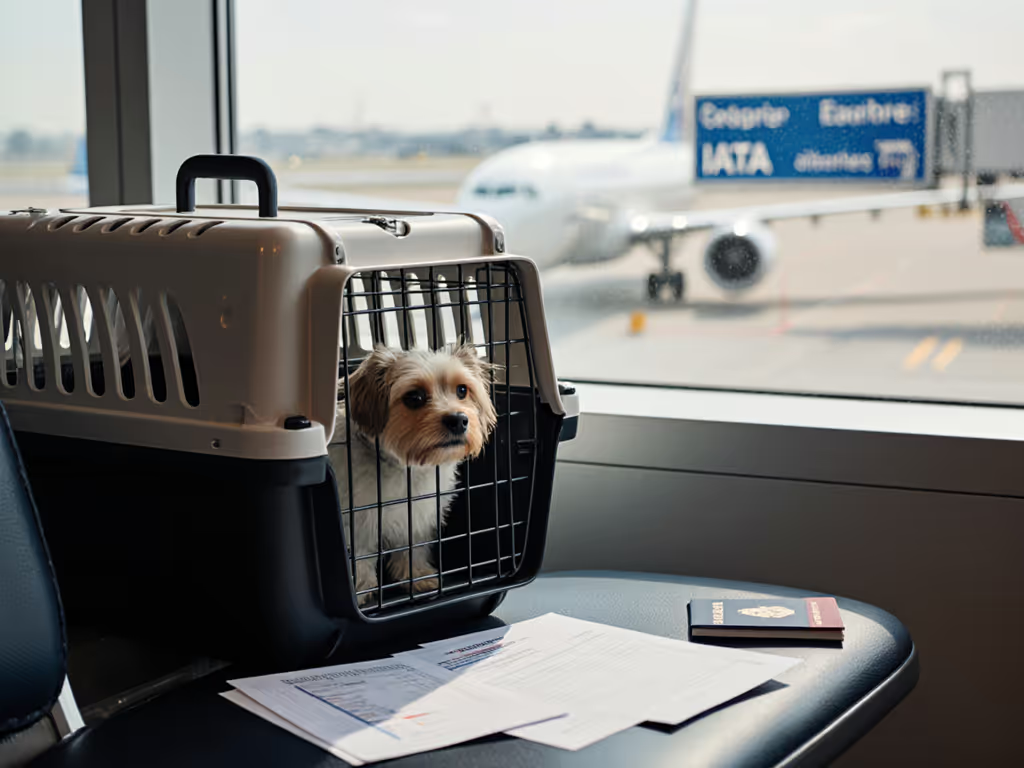
IATA Pet Carrier Requirements by Country
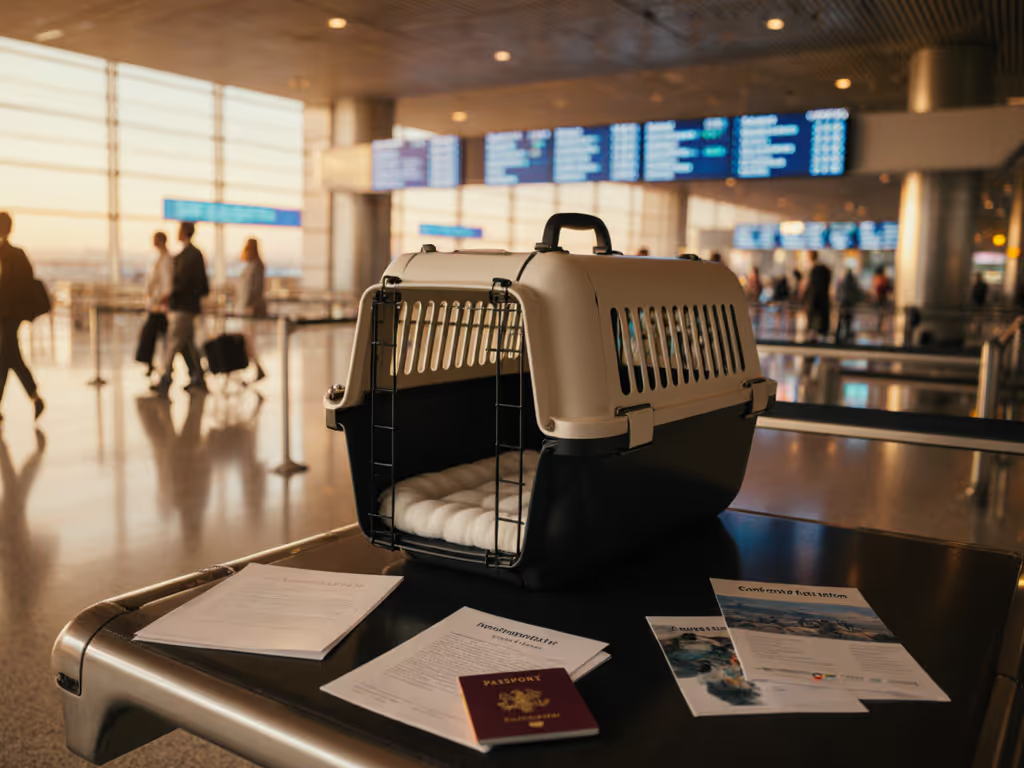
Stress-Free IATA Pet Carrier Guide: Global Regulations Compared
